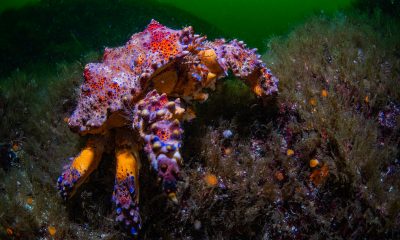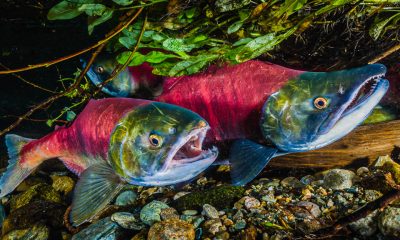News
Canadian search team consider ‘winter dive’ to explore Erebus wreck
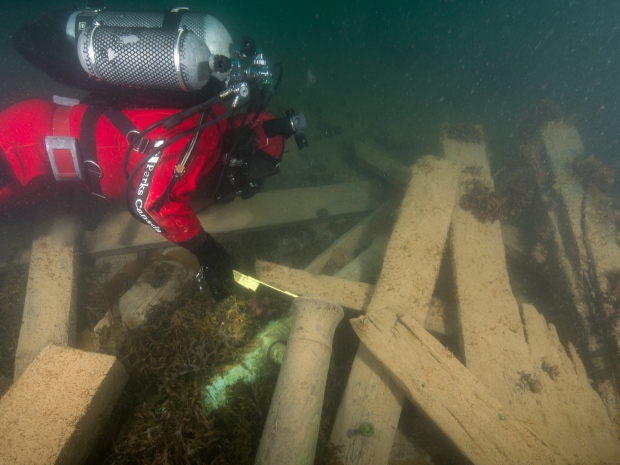
Could the wreck of the HMS Erebus reveal the fate of Franklin himself?
A Canadian search team who found one of the lost vessels of the ill-fated Franklin expedition are so eager to get back to their discovery they are considering a dive through the Arctic ice in the spring to get a closer look at the well-preserved wreck of HMS Erebus.
“We’re exploring that possibility as we’re very anxious to get back,” said Ryan Harris, a senior underwater archeologist for Parks Canada.
Searchers discovered British explorer Sir John Franklin’s reinforced 19th-century wooden warship in the Queen Maud Gulf back in September.

HMS Erebus and HMS Terror, shown in the Illustrated London News published on May 24, 1845, left England that year under the command of Sir John Franklin and in the search of the Northwest Passage.
But winter was rapidly closing in across Nunavut, and after just 12 hours taking photos and video of the sunken British vessel, underwater archeologists had to pack up and sail out of the Arctic before freeze-up.
The search team has every intention of going back to the site next summer — along with continuing the quest to find the other lost Franklin expedition ship, the HMS Terror.
But if there’s a way to get back to Erebus sooner — and Harris certainly hopes there is — divers could be going through the ice next April in an attempt to unravel more of the mystery of what exactly happened to Franklin and his crew of 128 men as they tried to find the long-sought Northwest Passage.
“It’s not something we routinely do,” Harris says of what would be considered winter diving.
- Lost Franklin expedition ship found in the Arctic
- Franklin expedition ship found in Arctic ID’s as HMS Erebus
- Franklin ship discovery ‘just the beginning’
“It’s not particularly complex, but it would mean that we’d be diving with surface-supplied diving equipment, not scuba, for safety.”
They would also have to set up an ice camp and rely more on air support — whether it’s helicopters or Twin Otters. And the Parks Canada team would likely be working more closely with divers from the Royal Canadian Navy.
Lots of expertise
While winter diving to explore a shipwreck is rare, it’s not unprecedented.
Last spring, Jonathan Moore, one of the members of the Franklin search team, worked with the Navy at the Nunavut wreck site of the HMS Breadalbane.
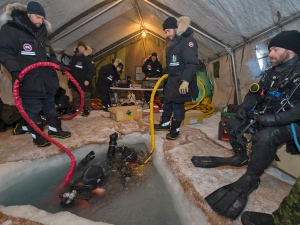
Canadian Armed Forces divers working on the sea ice near Gascoyne Inlet, Nunavut, spent six days in April 2014 using remotely operated underwater vehicles to capture footage from the merchant ship Breadalbane, which sank in the High Arctic in 1853.
HMS Breadalbane sank near Beechey Island in 1853 while trying to get supplies to others looking for Franklin’s lost expedition.
“The ice camp was set up by the navy, and their fleet diving unit deployed a remotely operated vehicle to get images and data on the Breadalbane at a depth of 90 metres, quite a challenging wreck site to work on, so yes, there’s definitely precedent,” Harris said.
“There’s certainly a lot going on in the Canadian Arctic, and we have a lot of expertise that we can tap into.”
One of the questions now is whether that technical expertise can tap into the kind of private-public sector partnership that helped find the Franklin ships.
“I’ll be in a listening mode and a position to offer help, but I think this is exciting for Parks Canada because they are really going to be able to build off navy capacity in this case,” says Jim Balsillie, the co-founder and former chairman of BlackBerry-maker Research in Motion who was heavily involved in the Franklin search.
Balsillie helped start the Arctic Research Foundation, which refitted a fishing boat now known as the Martin Bergmann research vessel, which assisted in the search.
- Franklin find proves ‘Inuit oral history is strong’
- The Franklin search: Peter Mansbridge on why we should care
- 4 reasons why the Franklin discovery is important
Whether or how the foundation might support a winter dive hasn’t been determined, but Balsillie says he is ready for suggestions.
“We will respond to Parks’ lead and the navy’s request in any way, shape or form we can be of help,” says Balsillie, who considers the foundation’s involvement in the Franklin search a “multi-year, probably multi-decade” project.
Done responsibly
Harris also sees the exploration of the Erebus wreck as a multi-year project, and one that must be done responsibly and systematically.
“There’s still quite a bit of work to do there,” he says.
“What makes it kind of difficult is the wreck is covered with a blanket of kelp.
“You have to be there firsthand to be able to poke in under the kelp fronds that cover the upper deck to be able to identify some features.”
Still, what Harris has been able to see so far has left him spellbound by the potential to unravel some of the many questions that have hung over the ill-fated Franklin expedition since the mid-1800s.
“Every dive we made was just a discovery from beginning to end, and you could scarcely take it all in. Everywhere you looked there was something new and really quite remarkable.”
Now, underwater archeologists are reviewing the hundreds of photographs and a couple hours of video they were able to take in September.
They are carefully plotting and planning their next moves in investigating what Harris describes as a “rather complex structure” that is overall “quite remarkably well-preserved.”
One of the challenges is to determine how divers can get inside the wreck.

John Geiger, president of the Royal Canadian Geographical Society, holds an iron fitting called a davit from a Royal Navy ship, the key piece of evidence that led to the discovery of HMS Erebus in Queen Maud Gulf.
“A couple of us had the opportunity to drop down between the exposed deck beams and have a look around, but we weren’t penetrating below the decks at all.
“We were just kind of having a look and that tells us there’s a lot of room inside the forward half of the ship,” says Harris.
“You could look forward and see the ship’s galley stove. You could see the forward hatchway going down into the hold.”
Among the questions, could Erebus reveal anything further about the fate of Franklin himself?
“You don’t know at this point. The potential is almost limitless,” says Harris, noting that preservation conditions on an Arctic shipwreck can be “astoundingly favourable to the survival of organic materials, even including paper.”
Maybe there will be journals from crewmen, with handwritten accounts sealed up tight in a satchel.
Will there be human remains? (None have been spotted so far.)
Will there be anything that helps settle the questions around whether lead poisoning or botulism played a significant role in the sad demise of Franklin’s men?

Searchers wonder what clues HMS Erebus might offer around the fate of Sir John Franklin, who was at the helm of HMS Erebus when it left England in 1845 with HMS Terror amid great optimism that they could find the Northwest Passage and sail to China.
Will there be clues that reveal whether Erebus drifted on its own to where it was found, or whether it had been re-manned, after the ships that had been beset by ice for two years and abandoned in 1848 off King William Island?
Maybe there will be evidence that reveals what the men were trying to do if they did indeed re-man the ship and navigate it into the Queen Maud Gulf.
“Were they just trying to get closer to the mainland so they could proceed on foot? Did they still hold out a forlorn hope of one day navigating to the Beaufort Sea?” Harris wonders.
“Hopefully time will tell.”
Source: www.cbc.ca
Blogs
EXCLUSIVE: Jeff Goodman interviews Mark Spiers, CEO of New Scuba Diving Training Agency NovoScuba

In a video recorded exclusively for Scubaverse.com, Jeff Goodman interviews Mark Spiers, CEO of new scuba diving training agency NovoScuba.
Find out more about NovoScuba at www.novoscuba.com.
News
Charting New Waters; NovoScuba Goes Global with the Launch of their Revolutionary Dive Training Agency!
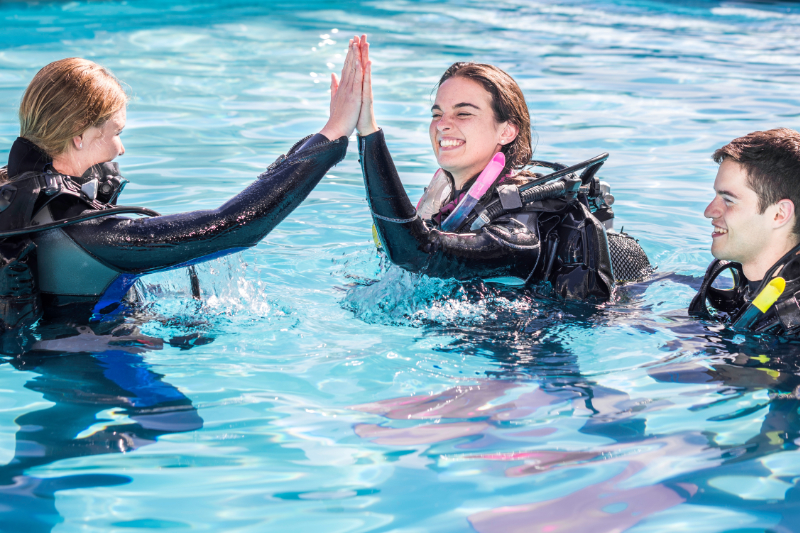
Discover a New Era of Dive Education: NovoScuba Brings Innovation to the Surface! Fully ISO Certified and Equipped with Cutting-Edge Technology.
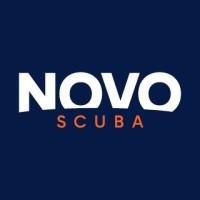 With a combined experience spanning over a century in the diving industry, a team of accomplished dive store owners, managers, and professionals unveils NovoScuba, a ground-breaking dive training agency poised to redefine the benchmarks of underwater education. Launching in May 2024, NovoScuba promises a revolutionary approach to dive training. Their vision is to make diving accessible to everyone, share success within the dive community and emphasise positive interactions with the planet.
With a combined experience spanning over a century in the diving industry, a team of accomplished dive store owners, managers, and professionals unveils NovoScuba, a ground-breaking dive training agency poised to redefine the benchmarks of underwater education. Launching in May 2024, NovoScuba promises a revolutionary approach to dive training. Their vision is to make diving accessible to everyone, share success within the dive community and emphasise positive interactions with the planet.
NovoScuba’s global debut marks a significant milestone in the dive industry. Driven by a vision to challenge convention and harness the power of technology, NovoScuba aims to revolutionise the dive training landscape through its innovative business model, which is digitally native, making it the most technologically advanced dive training agency to date.
“We recognised the need for change in the dive training industry and saw an opportunity to leverage technology, and redefine existing business models to create something truly innovative,” said Mark Spiers, CEO of NovoScuba.
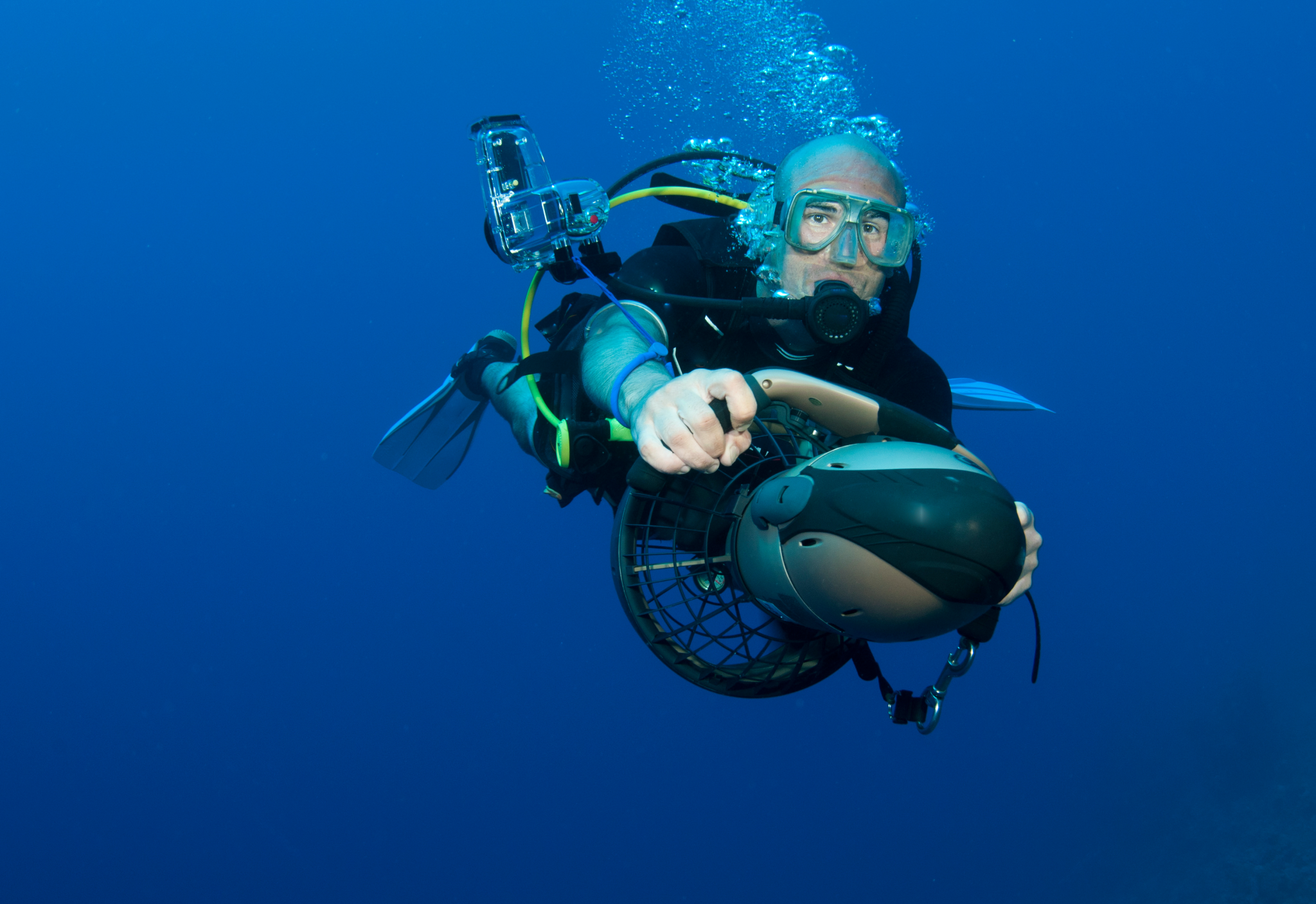
NovoScuba’s platform offers state of the art training programmes ranging from introductory up to professional diving, including various specialties. All programmes meet international standards and ISO certifications are in place. This commitment to shared success, accessibility and positive results for the planet, all at a cost effective and affordable level, is what will make NovoScuba stand out.
“Our deep understanding of traditional pain points for the industry, combined with our digitally native approach positions NovoScuba as a game-changer in dive education. Offering unparalleled initiatives such as student subscription, open access to all course materials, pay as you certify, no stock required, monthly membership payments, payment in local currencies, one-click certifications, and membership freezing, NovoScuba is set to redefine the industry. Available in 13 languages, at launch, the NovoScuba courses are written for the modern divers, with a focus on up-to-date content, interactive learning, and an engaging platform,” Mark Spiers concluded.
NovoScuba is challenging a change in the industry, redefining established traditional systems, and ushering in a new standard of excellence, support, and partnership. Their collaborations with dive stores, pros and underwater enthusiasts won’t demand exclusivity, prioritising earned loyalty, and an understanding that their Member’s success is key to their own.
NovoScuba
Diving Redefined.
-

 News3 months ago
News3 months agoCapturing Critters in Lembeh Underwater Photography Workshop 2024: Event Roundup
-

 Marine Life & Conservation Blogs3 months ago
Marine Life & Conservation Blogs3 months agoCreature Feature: Swell Sharks
-

 Blogs2 months ago
Blogs2 months agoMurex Resorts: Passport to Paradise!
-

 Blogs2 months ago
Blogs2 months agoDiver Discovering Whale Skeletons Beneath Ice Judged World’s Best Underwater Photograph
-

 Gear Reviews3 weeks ago
Gear Reviews3 weeks agoGEAR REVIEW – Revolutionising Diving Comfort: The Sharkskin T2 Chillproof Suit
-

 Gear Reviews3 months ago
Gear Reviews3 months agoGear Review: Oceanic+ Dive Housing for iPhone
-

 News2 months ago
News2 months agoPADI Teams Up with Wellness Brand Neuro to Drive Ocean Change and Create a Blue State of Mind
-

 Marine Life & Conservation2 months ago
Marine Life & Conservation2 months agoSave the Manatee Club launches brand new webcams at Silver Springs State Park, Florida



